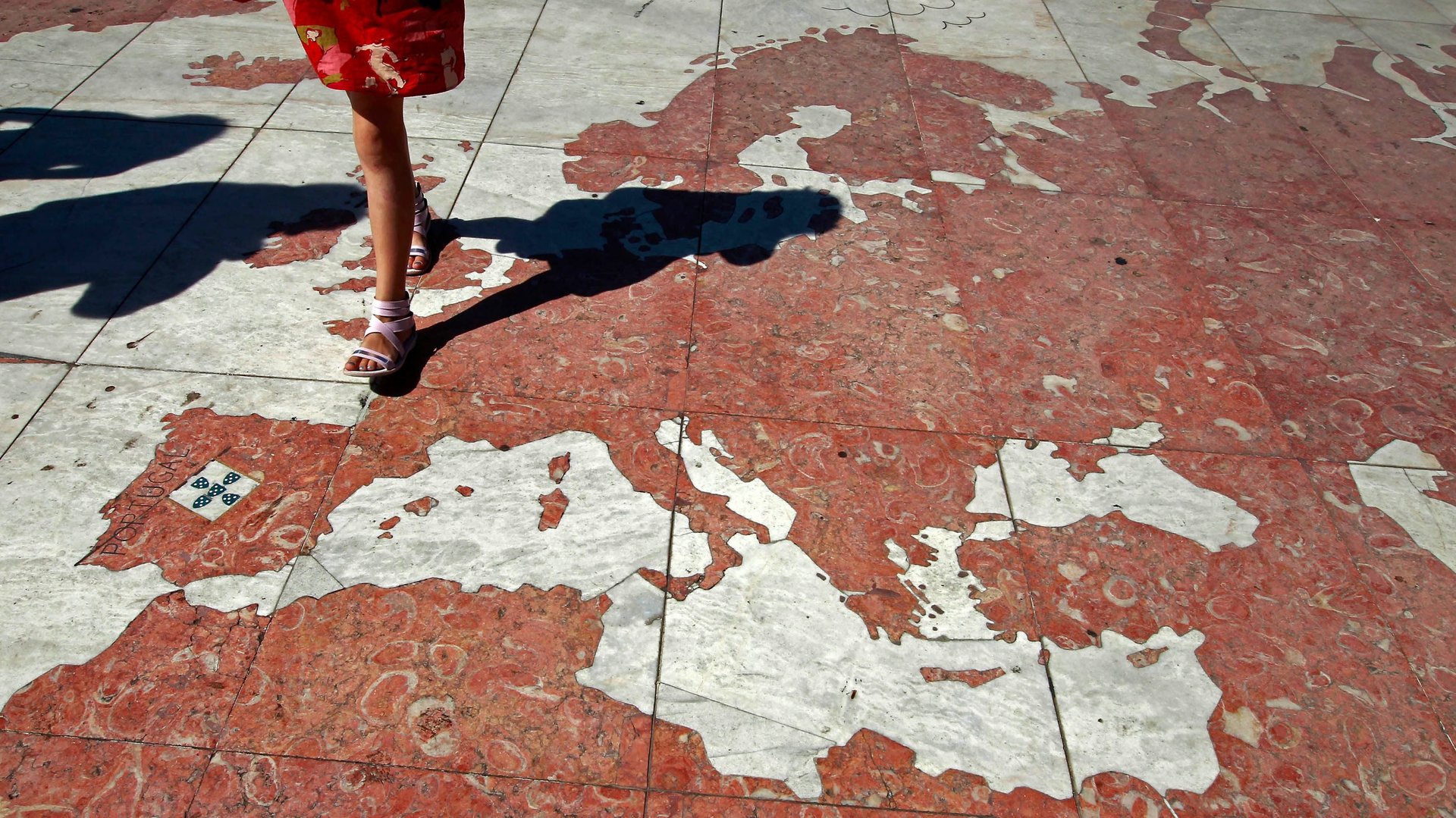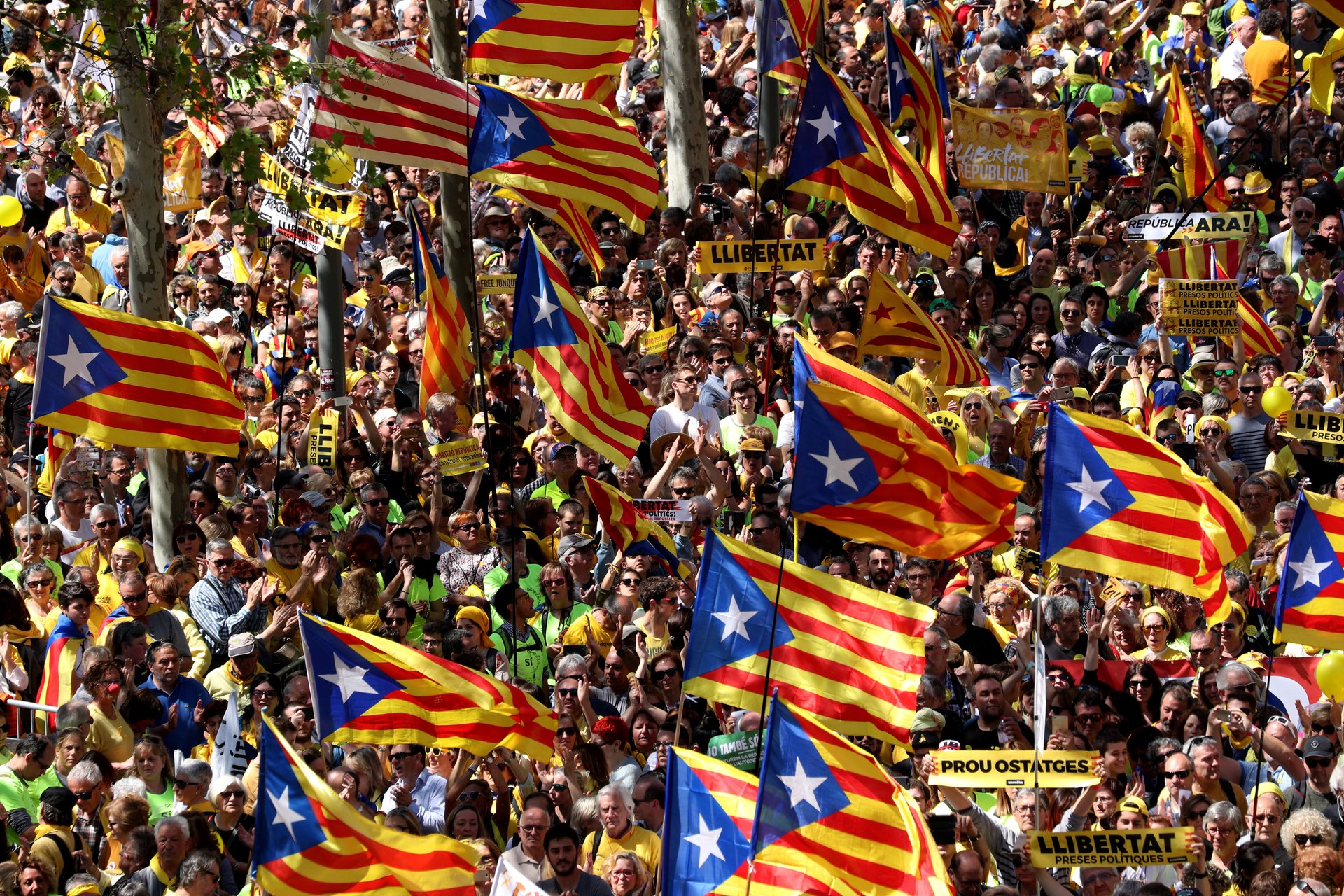More than 2,000 of the world’s languages are dying out
This is episode five of the series “The ID Question,” from How We Get To Next. Read episode one, episode two, episode three and episode four here.


This is episode five of the series “The ID Question,” from How We Get To Next. Read episode one, episode two, episode three and episode four here.
As a child, Kanako Uzawa treasured her school vacations, when she traveled from Tokyo to her family farm in Nibutani, a remote village in northern Japan. “There were rice fields extending into the distance,” she says. “It was all very green with fresh air… It was paradise for kids.”
Uzawa, who was born in Tomakomai, Hokkaido, is a member of the Ainu, an indigenous group from northern Japan. The story of this small community is one of erasure instigated by the state. In the late nineteenth century, the Meiji government sought a unified, cohesive vision of Japan; the very existence of the Ainu and other indigenous groups threatened Japan’s national myth of homogeneity. In 1899, the government passed an act now known as the Former Natives Protection Law, which stripped the Ainu of their identity: names were changed, language was curbed, and they were forced to give up hunting and gathering and begin farming on poor land.
As long as humans have formed shared identities around ethnicity, religion, race, language, and culture, those identities have been subject to erasure, from colonialism to war to economic globalization to linguistic homogenization to environmental change. Just look to the island nations of Tuvalu and Kiribati, preparing to sink beneath the sea, or to Greenland, preparing for its ice to melt away.
In the previous episode, we explored how asylum seekers struggle to define their identities, caught in limbo between their home countries and their adopted ones. Governments define official, legitimized forms of national identities, the structures into which new arrivals should be integrated. But these same structures are applied to groups who have long resided within countries’ borders—or, in the case of many colonized nations, predated the groups that currently hold power. How can a given group retain a sovereign identity within those national constructs?
The map of the world has never remained static. Right now, there are secessionist movements from Scotland to Kurdistan, each with their own particular historical origins and degrees of success. The ways and forms in which groups assert themselves might differ, but what unites them all is a clear sense of communal identity: one that demands to be seen, heard, and acknowledged as legitimate.
In Nibutani, the vast majority of its approximately 200 inhabitants are of Ainu descent. When Uzawa would return there, she would feel like she was part of a close-knit community. But back at school in Tokyo, she didn’t want to stand out from the crowd. “I never thought of that [Ainu] lifestyle as special or unique as a child,” she says. “But what was strange was when I would come back to Tokyo we would never talk about that life. Because nobody knew what it was and nobody asked. So I closed that part of myself and I just became a city girl.”
Now she feels pride for her heritage, inspired by her grandfather, Tadashi Kaizawa, a prominent Ainu rights campaigner. He first came to national attention in 1989, when he and a friend, Shigeru Kayano, sued the government over a hydroelectric dam that was being built on the sacred Saru River—it was being built, they claimed, on stolen land.
Close to a decade later, Kaizawa and Kayano won their case—though by the time the judge issued a ruling, the dam had been built. The judgment marked the first time that the Japanese government was forced to both acknowledge the existence of the Ainu, and to acknowledge that they had certain rights endowed to them under the country’s constitution. In the middle of the case, when Uzawa was 15, she heard her aunt say that to be Ainu is to be discriminated against. “That was the awakening, from when I started to critically think about my heritage and identity.”
Uzawa feels that many Ainu people are still afraid or reluctant to reveal their identities. When she worked in Tokyo, she kept her Ainu heritage private because she didn’t want to create a situation where she would have to defend or explain herself. “I don’t know if I would call it open discrimination,” she says. “But there is a feeling of discomfort.”
Japan did not actively recognize the Ainu as an indigenous group until 2008, and the battle continues: the Ainu still don’t have political self-determination. “Even though it looks like we have been given recognition, a large part of the struggle remains,” says Uzawa. “We still feel that we do not have the final say in matters related to us.”
“The government only said that yes, OK, you are indigenous people of Japan, but you can only promote and disseminate the historical parts and cultural parts of your group,” says Uzawa. “Under this act, rather than focusing on a comprehensive notion of livelihood or indigenous rights, there is only support for the practice of culture, and still, many problems remain.”

Spain, like many European nations, is built out of a number of smaller medieval kingdoms, each with their own culture, language, and history. In the east of the country, Catalonia is currently caught in a secessionist struggle that’s as tense as is possible to find in a contemporary democracy in peacetime.
Some Catalonians are fighting for more independence within the existing Spanish constitution (which devolves power to the different regions, in recognition of their independent histories); some want an entirely independent state, either due to patriotism, economics, or both. Catalonia is Spain’s wealthiest region, and many Catalonians claim to be tired of subsidizing the poorer parts of the nation—something seen in less popular secessionist movements elsewhere in Spain, as well as in other countries, like Italy.
What is it to be Spanish? What is it to be Catalonian? Rosalia Martinez, 38, considers her own national identity to be complex. Her father is from Galicia, and her mother, who is from Catalonia, in turn has ancestors from both Catalonia and Aragon. “My idea of being Spanish has been constructed from a mix of different regions,” she says. “It’s about sharing regional languages and identities. My parents teach Spanish and at home we speak Galician. My grandmother used to sing us songs in Catalan.” She doesn’t feel she should have to choose one of these identities over any of the others.
Like Uzawa, Martinez traces back the origin of identity to childhood memories. She speaks Galician at home, and spent her summer vacations with her grandparents in a small village in Galicia. Today, she can speak several of the Spanish languages and smoothly transitions from one to another. But her language choices at any given moment are inextricable from sense of place: when she wants to convey a feeling of wilderness, she slips into Galician, inspired by childhood memories of the natural world. “There we practically lived in a forest,” she says. “So when we have to refer to something like that, we shift, without even noticing.”
“Identity has a lot to do with language—it has poetry and literature, myths and stories and archetypes,” says Martinez. “It isn’t just day-to-day communication. You share a code when you share a language.”
When countries work to define national identities, language is key. Language links people to a communal past, and newcomers to a shared future. But it can also exclude and alienate, and forcing a language on a community can be devastating: a tool for asserting state dominance over individual and local forms of identity.
In Japan, where the various Ainu languages were banned in 1872, efforts to revitalize the last surviving dialect have only recently been supported by the state. In Catalonia, speaking Catalan can be a patriotic gesture, a recognition that centuries of suppression in favor of Castilian—what we now think of as simply “Spanish”—was not enough to extinguish the region’s identity.
According to UNESCO, there are currently 2,464 threatened languages spoken around the world. 592 are classified as “vulnerable”—children still learn them, but they are not necessarily used widely in daily life—while the rest, the vast majority of the world’s languages, are seen as “endangered.”
Many countries fund language courses for new arrivals to encourage immigrants or refugees to integrate. Between now and 2020, Germany is spending €5.7 billion ($6.7bn) on such courses—including “soft” skills like cultural understanding in addition to language instruction. This is an unusually large sum; countries like the UK or the Netherlands spend tens of millions, rather than billions, on similar programs.
The UK has shown how a country can reverse a policy of suppressing a language through reasonably small budget commitments: roughly £150 million ($201m) per year is spent on tuition in Welsh schools and on subsidizing Welsh-language media. A few decades ago, Welsh seemed doomed for extinction, though these programs have slowed that decline rather than reversing it. Other languages in the UK—including Gaelic, Scots, Manx, and Cornish—have yet to receive the same kind of government support, despite being closer to extinction.
While many are still under serious threat, indigenous and minority languages in other parts of the world are experiencing a period of regrowth. According to the 2016 World Minority Report, “In New Zealand, there has been a steady increase since the 1990s in the number of children being taught in te reo Māori [the indigenous Māori language]. Policies promoting the recognition of Māori culture and the visibility of Māori identity in the national arena have been a positive factor in the revitalization of the language.” A similar revival of Hawaiian is being used as a model for how other indigenous languages can be revitalized.

In Spain in the mid-twentieth century, Castilian Spanish was the only language allowed. Francisco Franco’s authoritarian government revoked the official statute and recognition for Basque, Galician, and Catalan. The minority languages were banned in schools, advertising, religious ceremonies, and road signs. Rosalia Martinez didn’t live through this time of cultural suppression, but she heard about it from her parents. “My father used to tell us how Galician was forbidden at school,” she says. “Treatment of other languages was shoddy and oppressed.”
Since Franco’s death in 1975, the Spanish government has encouraged the use and revitalization of regional languages, from making them compulsory in schools to granting them official language status, including support for public-funded regional-language TV channels. “I remember my cousins from Catalonia and Galicia complaining because they had an extra subject to learn,” Martinez says with a laugh.
But some Spaniards feel that the urge to protect and conserve regional languages can be counterproductive. Elisabeth Borras, who is half-Catalonian, thinks the government’s language revival efforts may have been taken too far. “So much money has been spent dubbing movies into Catalan. Ultimately you should be spending money on things that might be helpful to society, like more schools,” she says. “I think it was a mistake to take it so seriously.” Her mother, who lived through the dictatorship—when Catalan was banned in schools—is today learning how to properly write in the language.
Others fear that these linguistic revivals might be etching deeper divides. Anti-independence Catalonians—as well as people in other regions of Spain and across Europe—worry this might create risky precedents that could set off a series of secessionary demands.
Martinez understands these concerns: she feels that some part of the current polarization between Catalans and Spaniards has been institutionalized by education and worsened by the financial crisis. “It serves the purpose of politics, making the identities clash, especially for regional governments,” she says. “I think it is a pity. If you ask people in Spain, we feel quite sad.”
She believes the Spanish government has done a good job reviving regional languages—but that doesn’t extend to the independence question. “The government is important in this but I don’t think you need an independent country for that,” she says. “Historically and culturally we have co-existed for the most part. I don’t understand why we can’t go on. They are a part of Spain, too, because they are a part of me.”
Uzawa, Martinez, and Borras all want to pass their cultural identities onto the next generation, whether through language or traditions or visits to specific regions. For all of them, childhood is the touchstone to which they return when their identities are in question. The next generation is the one that will have to continue the work of preserving and spreading cultural traditions, including language.
Borras attended an English school because her parents could not decide whether to put her in a Spanish or a Catalan one. But she wants to ensure that her child grows up Catalan. Uzawa, who now lives in Norway, makes sure to take her children to the ancestral village at least every other year, so they can feel a part of it. When she took them to the Tokyo Ainu cultural center, she explained Ainu traditions. “And my daughter asked: if this is Ainu clothes and you’re Ainu, why aren’t you wearing those?” she says. “Sometimes your children ask you questions that you haven’t asked yourself.”
This article was originally published on How We Get To Next, under a CC BY-SA 4.0 license. Read more about republishing How We Get To Next articles. Sign up to the How We Get To Next newsletter here.